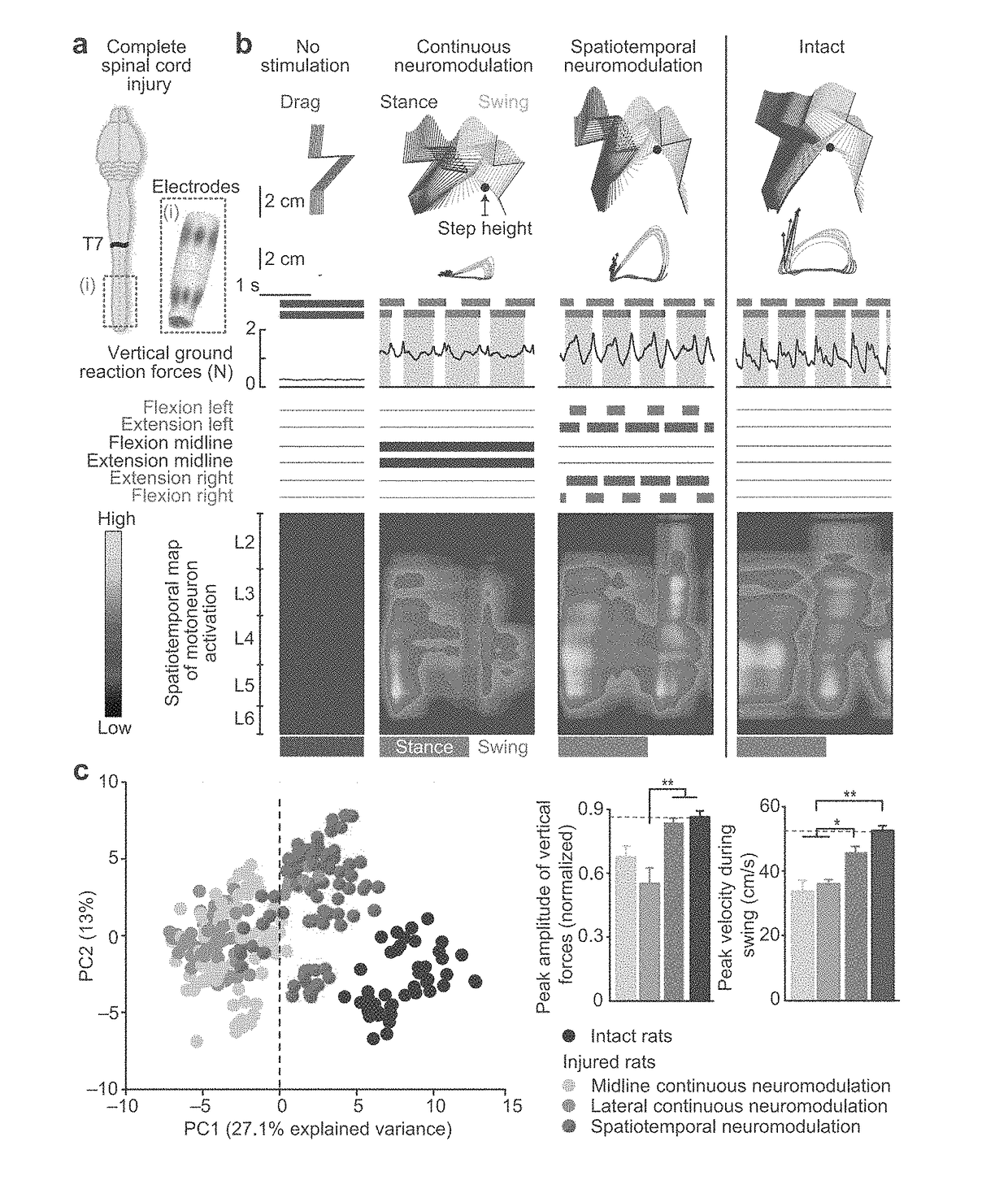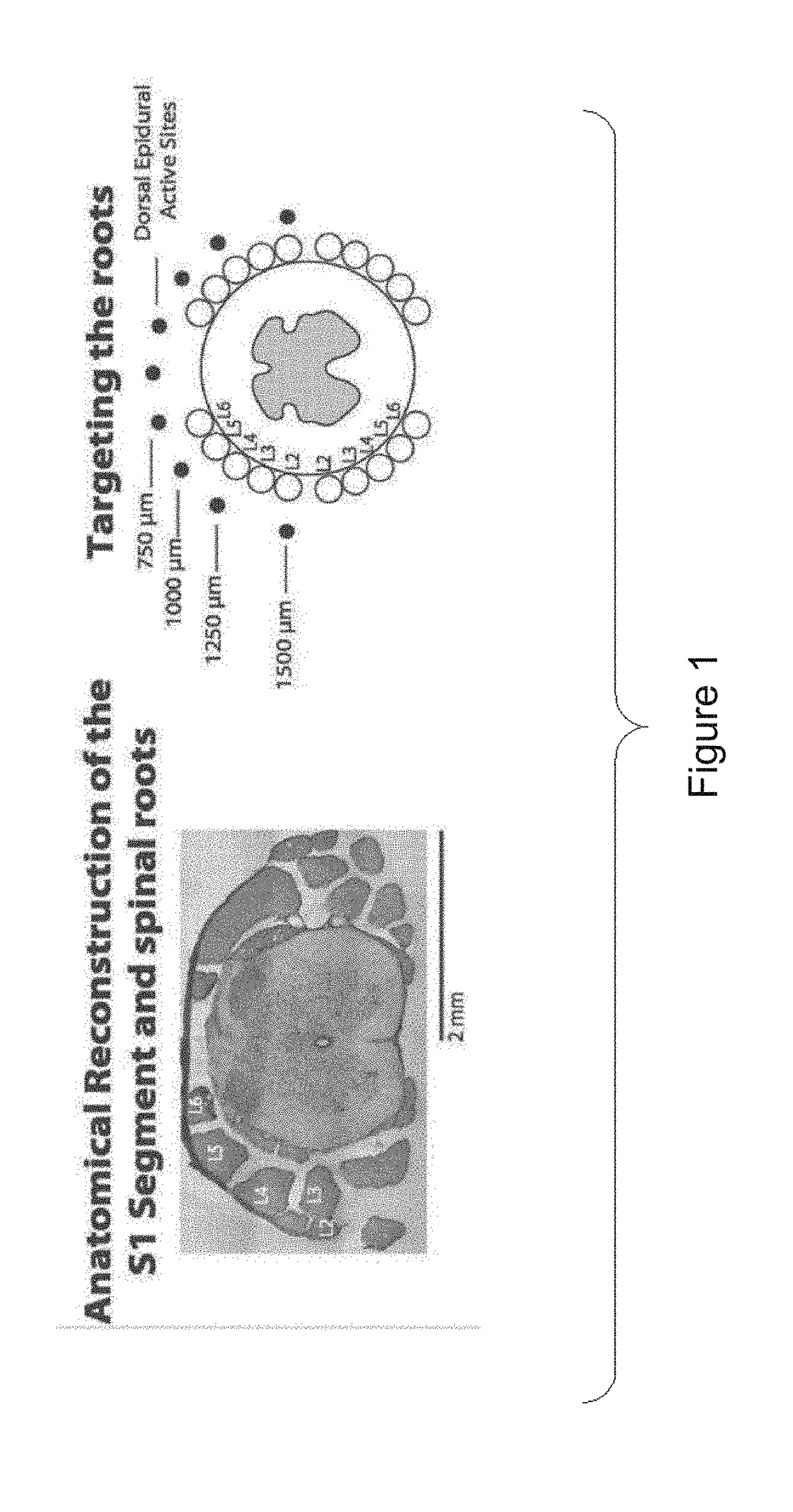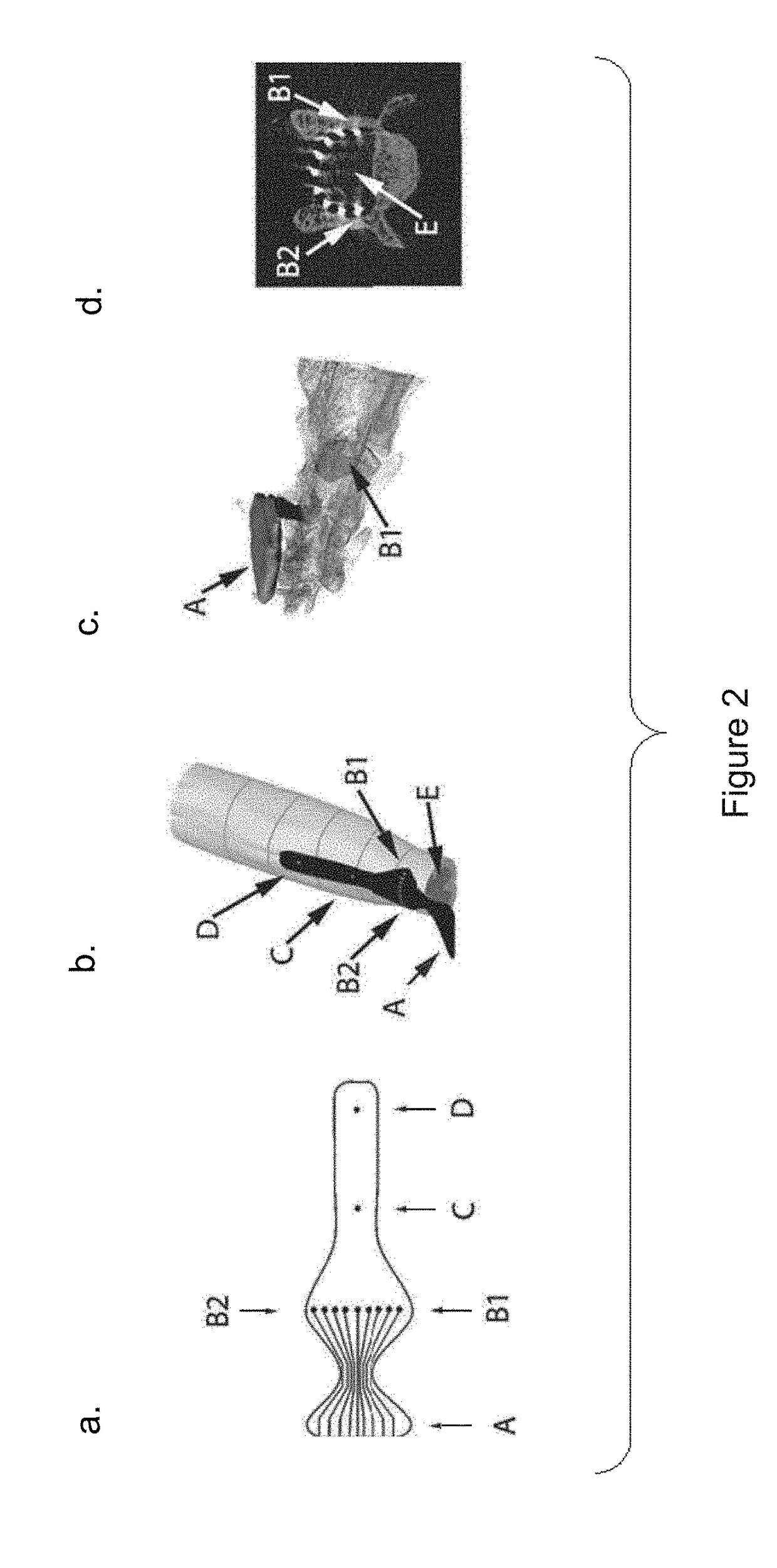System for selective spatiotemporal stimulation of the spinal cord
a spatiotemporal stimulation and spinal cord technology, applied in the field of spinal cord neuroprosthesis for motor disorders, can solve the problems of current stimulation protocols and systems that do not attempt to reproduce spatiotemporal patterns, remain unspecific, and affect the range of motor disabilities, so as to achieve the effect of fine control of movements
- Summary
- Abstract
- Description
- Claims
- Application Information
AI Technical Summary
Benefits of technology
Problems solved by technology
Method used
Image
Examples
example 1
Design of Selective Interfaces for Lumbar, Sacral, and Cervical Root Stimulation
[0259]We found that selective dorsal root stimulation has superior performances in terms of root specificity compared to classical approaches. Therefore, we tailored the design of a lumbar epidural array to the S1 spinal segments of rats.
[0260]Similar to humans (13), the rat lumbar spinal cord is surrounded by the dorsal roots (FIG. 1) that run longitudinally to the cord and show a specific topological organization at the L6 / S1 segment. Dorsal roots are formed by ensembles of sensory afferents, including large myelinated proprioceptive and cutaneous fibers that are recruited by Spinal Cord Epidural Stimulation. At the sacral level, in mammals, the roots are organized in longitudinal substructures that surround the cord up to the entry point of each rootlet. A transversal representation of the sacral cord reveals the transversal topological organization of the longitudinal rootlets organized with rostral ...
example 2
Validation of Lumbar Root Stimulation in Rats: Monopolar Specificity
[0264]We implanted our stimulation device (e.g., stimulation device 111 of FIG. 11), which included a multi-electrode array for selective dorsal root stimulation, over the S1 spinal segment below the L2 vertebra in rats (FIG. 2 and FIGS. 3A and 3B). The electrodes were disposed transversally over the dorsal aspect of the S1 spinal segment. Animals were implanted with chronic EMG electrodes in ankle flexor and extensor muscles of both limbs (Tibialis Anterior and Medial Gastrocnemius, TA and MG respectively) to record muscle activity (e.g., with electromyogram recording system 130 of FIG. 11).
[0265]We performed recruitment curves of muscle evoked potential by stimulating the animals with single pulse EES at increasing current amplitudes through each of the 9 active sites (FIG. 3). Results show the progression of the muscle recruitment from the leftmost (site E1) to the rightmost (site E9) active site. Stimulation of ...
example 3
Validation of Lumbar Root Stimulation in Rats: Bipolar Specificity
[0266]After experimental validation of selective dorsal root stimulation with monopolar electrode configurations, we exploited the design of our multi-electrode array for multipolar stimulation of the dorsal roots.
[0267]Multipolar stimulation can indeed increase specificity by modulating the shape of the stimulating field (cathodic) with anodic current sources.
[0268]We found that our transversal multi-electrode array can be used with multipolar stimulation patterns that aim at restricting the transversal diffusion of the cathodic field in order to increase root specificity.
[0269]For this, we connected our multi-electrode array with a pulse generator that controlled independent current sources and featured a common return electrode serving as a reference that was placed subcutaneously over the right shoulder.
[0270]First, we sought to selectively target the L2 root, which is known to innervate mainly hip flexor muscles ...
PUM
 Login to View More
Login to View More Abstract
Description
Claims
Application Information
 Login to View More
Login to View More - R&D
- Intellectual Property
- Life Sciences
- Materials
- Tech Scout
- Unparalleled Data Quality
- Higher Quality Content
- 60% Fewer Hallucinations
Browse by: Latest US Patents, China's latest patents, Technical Efficacy Thesaurus, Application Domain, Technology Topic, Popular Technical Reports.
© 2025 PatSnap. All rights reserved.Legal|Privacy policy|Modern Slavery Act Transparency Statement|Sitemap|About US| Contact US: help@patsnap.com



